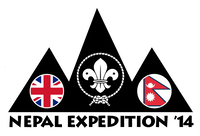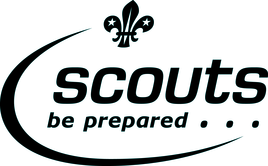Kit List
This is my advice and recommended kit list, shop assistants may take a different view. This is not a problem as at the end of the day some of the choices may come down to personal preference. Any difficulties or if I have not made something clear then give me a call or e-mail me - I'll be happy to help. I would rather you ask than buy kit that is not appropriate!
No need for a sleeping bag as Access Himalaya will be providing them on our arrival in Nepal. I would suggest bringing a sleeping bag liner (silk or cotton) these are cheap and can provide a good bit of extra heat.
Access Himalaya are also providing us with an expedition bag. These will go with us when we trek and so we will not need a large 75/80 litre bag. Instead we can travel to Nepal with a suitcase and then repack the expedition bag on arrival in Kathmandu. So do not go buying a large hiking bag! I would strongly suggest that you consider buying a waterproof bag liner to keep your clothes and sleeping bag dry - a 70/80 ltr waterproof liner bag would be sufficient.
You will need a 30/35 litre day sack. This is the bag you will be carrying while on the trek (your main expedition bag will be carried by the Nepalese porters). Your day sack has to be comfortable and you must be able to pack a small personal first aid kit, fleece, waterproof jacket and two 1ltr water bottles inside it. No draw string bags!
I would suggest you bring at least two fleeces - one thin and one thick. It does not matter if they are half zipped or fully zipped at the front.
A good water proof jacket - has to be breathable GORE-TEX or equivalent. All the main outdoor clothing companies have their own version of GORE-TEX. Berghaus has Simplex and Lowe Alpine has Triple Point these are just as good but please make sure it is made of a breathable/wicker material. Another good option is a poncho as they can go over your day sack as well - plus they are cheaper! Breathable waterproof trousers would be nice if you already have them, but would be an unnecessary expense just for the trip. If you wear shorts whilst walking you may choose not to wear waterproof trousers. If you are wearing trousers or for sitting around at camp some cheap and cheerful waterproof trouser will be fine. I would suggest that everyone brings gaiters (waterproof items that attach to your boot and protect to just below the knee – these may be needed if there is snow at or on approach to the summits).
Footwear: Either hike boots or 'approach' boots. Approach boots are basically light weight hiking boots. I wore Solomon approach boots up to Everest Base Camp so they will be able to handle the trekking that we are covering. The boots must have ankle support and they must be worn in. Do not go and buy the boots a couple of days before we go! They have to be broken in. They must be comfortable as you will be spending most of the day for consecutive days at a time.
Water is best carried in SIGG, Nalgene or equivalent 1ltr bottles. You can also use Camelback/Platypus type carriers. I would suggest that you are able to carry about 2 litres (think about this when buying your day sack – Are you able to fit the water bottles into the side pockets for ease of use?). Camelbacks and platypus' are easily damaged, so if using one it is a good idea to bring a bottle as well.
Do not bring cotton socks for trekking - cotton rubs and will cause blisters. Two pairs of socks or one thick pair of hiking socks are best two options. Consider ‘1000 mile’ socks they have a dual layer to reduce the chances of blisters.
First aid kit to contain: Immodium / Nerofen / Solpadeine / Blister pack / Antiseptic wipes / Plasters and any other medication that you believe that you may need.
Layers are best. A base layer (thin t-shirt type top) followed by light fleece and then a jacket. It will be hot during the day and cold at night – especially at altitude.
You will burn very quickly at altitude. High UV Sun Cream P20 is best (although some people have skin problems with this – please consult your doctor).
I would suggest that walking poles are a good idea. They can be extremely useful, however this one falls more under a personal preference.
We will not be travelling in Scout shirts but they will be taken by everyone going. International scarf's are also to be taken these will be worn when leaving.
This kit list is only a guideline and is not exhaustive. It is your personal kit, so bring what best suits you. Please remember that space in your bag will be at a premium, so don't bring it if you don't need it! The porters have a tough enough job as it is; don't make it harder for them!
Expedition
- Fleeces/jumpers x 2 (at least)
- T-shirts or similar (at least 8)
- Trousers x 1 or 2 and shorts x 3 or 4
- Underclothes (at least 8)
- Socks (at least 8 pairs)
- Hiking boots/Approach boots
- Flip flops to wear after trekking
- Waterproof jacket & trousers
- Wool hat and gloves (neck warmers are also great I would strongly recommend it)
- Sun hat, sun cream, sun glasses, lip salve
- Towels - Travel towels are best (pack up small and dry quickly) – Try Kathmandu
- Head Torch
- First Aid kit (minimum as stated above)
- Day sack
- 1ltr water bottles or equivalent
- Dry Wash for cleaning hands
- Wet wipes
- Camera / Films
- Spare batteries
- Waterproof bag liner
- Expedition soap for washing clothes
- String for washing line (Optional)
- Spare boot laces
- Pen/pencil & paper/notebook
- Playing cards/book (Optional)
- Walking poles (personal choice – but good if you suffer from painful knees etc)
- Wash Kit
- Sandals with straps or deck shoes for white water rafting
- Swimming shorts
- Passport size photos x4
- Small pad lock
- Gaiters (If you haven’t got waterproof trousers)
Rest of the Trip
- Clothes to wear around Kathmandu (will be left at hotel whilst trekking)
- Towel
- Trainers


